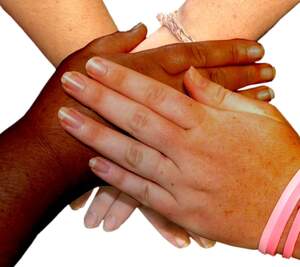

National Wear Red Day
Observed
the first Friday in February (since 2004)
Dates
Founded by
Member of
Hashtags
Sources
Taking place during American Heart Month, National Wear Red Day encourages people to wear red to raise awareness about women's heart health and cardiovascular disease in general, and to help make people aware that heart disease is the number one killer of women. The ultimate goal of the day is to help save lives.
In 2003, the American Heart Association and the National Heart, Lung and Blood Institute decided to address and take on the issue of heart disease in women, which was killing almost 500,000 women a year. They believed that the issue wasn't being paid enough attention to and that many people falsely believed that heart disease affects men more than women, which is not the case. One component of their focus on women's heart health was to create National Wear Red Day. They chose red because it is a color that stands out, and appropriately, it also is the color that represents the heart.
In addition, the American Heart Association created the Go Red For Women campaign, which also raises awareness about women and heart disease, by supporting education programs, and advocates for more research about heart health by raising money. According to the American Heart Association, there were many positive changes after the day and the campaign were created. In the first fourteen years, they found evidence that over half of women increased their exercise routines, over one-third of women lost weight, and sixty percent of women changed their diets, among other improvements. Within this time frame, 300 fewer women in America were dying of heart disease and stroke each day.
Still, there is much work to be done. Cardiovascular disease is the number one killer of women. It causes as many deaths as the next three causes of death combined. One in three women dies of heart disease, while only one in thirty-one women dies of breast cancer.
Heart disease affects blood vessels and the cardiovascular system. One condition is atherosclerosis, where plaque builds up on artery walls and narrows them. It becomes harder for blood to flow, and blood clots can completely stop the blood from flowing, leading to heart attack or stroke. Other conditions include heart failure and congestive heart failure, when the heart isn't pumping blood as well as it should and is not getting enough oxygen; arrhythmia, when the heart has an abnormal rhythm, either beating too fast, too slow, or irregularly, which affects the heart's ability to pump enough blood to get the body what it needs; and heart valve problems, when the heart isn't closing properly or opening enough.
There are some things that people can control and can be done to keep the heart healthy, while some things can't be controlled. Blood pressure is one area where people can control their own heart health. Those who are twenty or more pounds overweight have a risk for higher blood pressure, so working to lose weight can help with this. Similarly, physical activity lowers blood pressure, as does a diet low in salt, saturated fat, bad cholesterol, and alcohol. People can also help control their blood pressure by getting a blood pressure monitor for at home, which will help them know what their blood pressure is, and if steps they are taking to regulate it are being effective.
Heart health can be protected by lowering bad cholesterol. Cholesterol is a fat-like substance found in blood and all cells, which turns to plaque after building up on artery walls. This can narrow walls, restrict blood flow, and lead to heart attacks and strokes. There are both good and bad types; LDL is bad cholesterol, while HDL is good cholesterol. LDL is inherited but is also increased by eating saturated fats, trans fats, and foods with it in it. HDL is believed to lessen the plaque on arteries and protects against heart attacks. Beyond changing their diet, people can address cholesterol levels by making an appointment with a doctor so they know what their levels are, and can make changes if needed before they have heart issues.
Exercising, losing weight, quitting smoking, and eating healthy are all ways that people can work to keep their hearts healthy. Everyone should exercise at least thirty minutes a day. It has many benefits for the heart, such as improving blood circulation and cholesterol levels and preventing high blood pressure. Having a diet focused on vegetables and fruits, lean proteins, whole grains, and healthy fats will help keep a heart healthy.
One thing that people don't have control over is their family heart history. If their grandparents, parents, or siblings have had heart issues, it is more likely that they will have heart issues as well. But, knowing their family history is something they can control, and a person just needs to work extra hard in other areas with things they can control to offset hereditary health issues.
How to Observe National Wear Red Day
Celebrate the day by wearing red to raise awareness about women's heart health. This is especially important to do if you are a woman who has been affected by cardiovascular disease, or if you know a woman who has been affected by it. The brighter and flashier the red the better, as you want to call attention to the color so people ask about why you are wearing it.
You could also celebrate by donating to Go Red for Women campaign, to help fund advocacy for legislation and research.
Taking care of your own heart health is another fitting way to celebrate the day. Some things you could focus on for the future are healthy eating, exercise, learning about your family's heart health history, quitting smoking if you smoke, and working to regulate and keep an eye on your blood pressure and cholesterol levels.





















